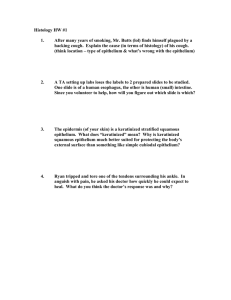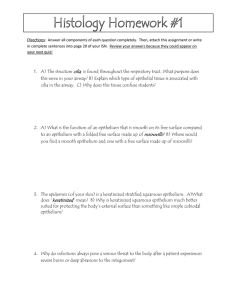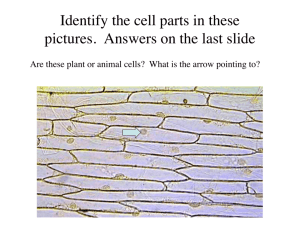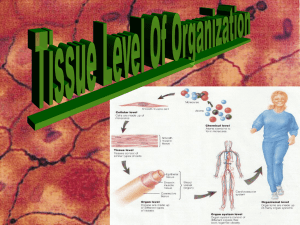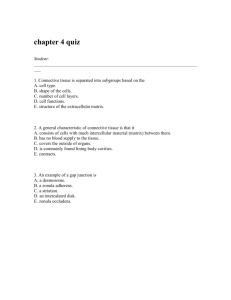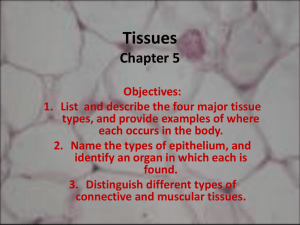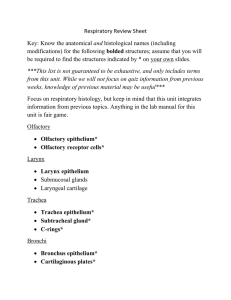BIOS 1300 SI SI WORKSHEET 9 (Histology) SI Leader: Merrin
advertisement
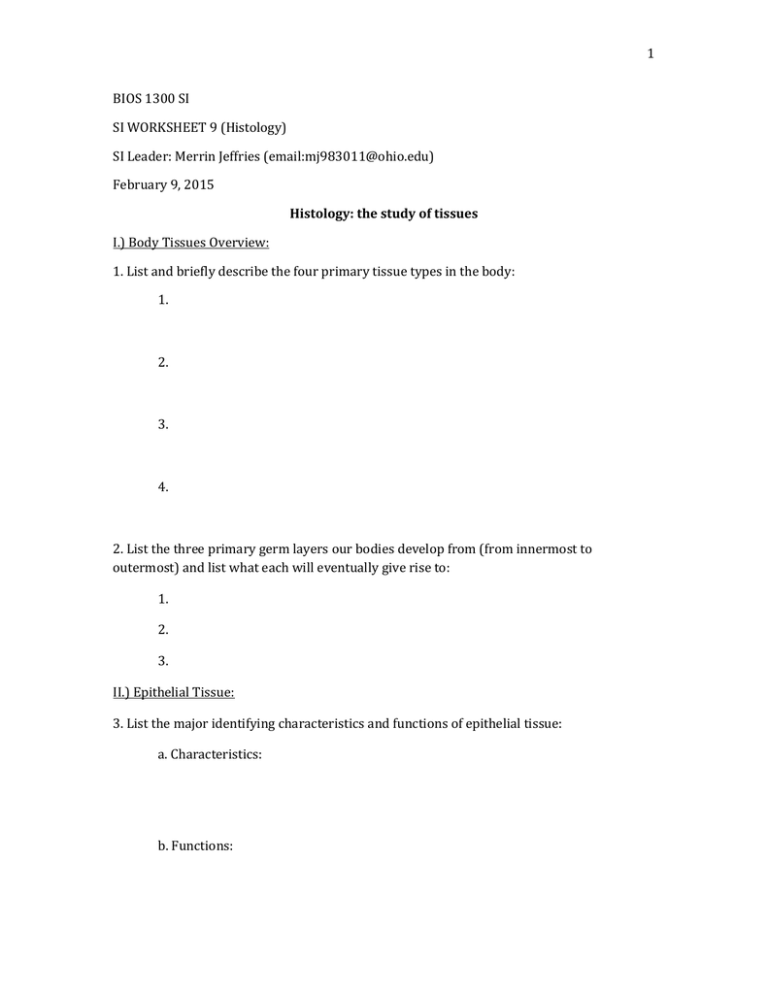
1 BIOS 1300 SI SI WORKSHEET 9 (Histology) SI Leader: Merrin Jeffries (email:mj983011@ohio.edu) February 9, 2015 Histology: the study of tissues I.) Body Tissues Overview: 1. List and briefly describe the four primary tissue types in the body: 1. 2. 3. 4. 2. List the three primary germ layers our bodies develop from (from innermost to outermost) and list what each will eventually give rise to: 1. 2. 3. II.) Epithelial Tissue: 3. List the major identifying characteristics and functions of epithelial tissue: a. Characteristics: b. Functions: 2 4. Fill in: Naming Epithelia: - Classification of epithelium is based on the shape of the cells and the arrangement of the cells within the tissue. Typically, the arrangement of the cells is stated first, then the shape, and is followed by “epithelium” to complete the naming (Ex. Simple Squamous Epithelium). Arrangements: fill in the blank with the correct term: 1. ______________________: Cells are found in a single layer attached to the basement membrane 2. ______________________: Cells are found in 2 or more layers stacked atop each other 3. ______________________: A single layer of cells that appears to be multiple layers due to variance in height and location of the nuclei in the cells. 4. ______________________: Cells are rounded and can slide across one another to allow stretching Shapes: 1. _______________________: Flat, thin, scale-like cells 2. _______________________: Cells that have a basic cube shape. Typically the cell's height and width are about equal. 3. ________________________: Tall, rectangular or column- shaped cells. Typically, they appear taller than they are wide. 5. Fill in the following table: Epithelial Tissue Identification: Name of Epithelial Tissue Simple Squamous Epithelium Picture Major Characteristics and Functions Location 3 Simple Cuboidal Epithelium Simple Columnar Epithelium Pseudostratified Columnar Epithelium Stratified Squamous Epithelium (Keratinized vs. Nonkeratinized) 4 Stratified Cuboidal Epithelium Stratified Columnar Epithelium Transitional Epithelium **Tuesday’s and Thursday’s SI sessions this week will cover the remaining 3 tissue types in the body: III.) Connective Tissue IV.) Nervous Tissue V.) Muscular Tissue Helpful Histology Resources: http://www.highlands.edu/academics/divisions/scipe/biology/labs/rome/histology.pdf
